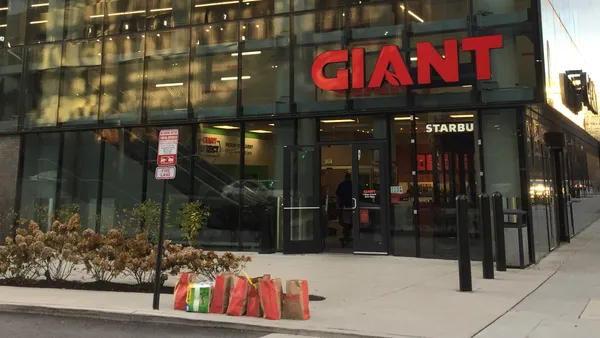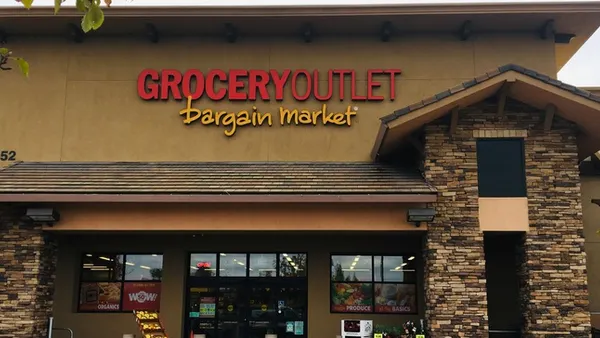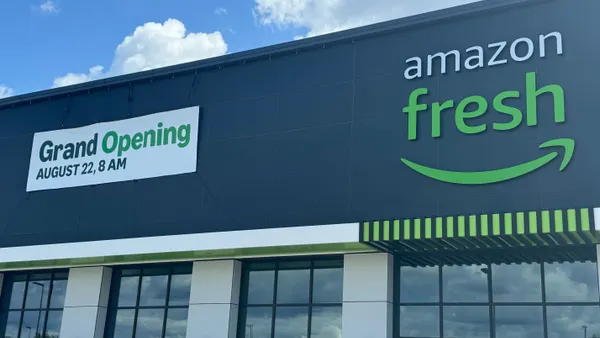Whole Foods Market is on a mission to reimagine its shopping experience.
The Amazon-owned grocery chain announced last month it plans to roll out a new concept called Whole Foods Market Daily Shop, offering urban residents a scaled-down shopping experience.
The first of these smaller locations is set to open at 1175 Third Ave. in New York City later this year followed by two more in 2025 and then a fifth in 2026 — all in New York City — before Whole Foods turns to other urban markets such as Boston, Chicago and Washington, D.C., Whole Foods Executive Vice President of Growth and Development Christina Minardi said in an interview last month.
The focus on New York City for the inaugural Daily Shop stores follows Whole Foods’ ongoing expansion there. The opening of its One Wall Street store at 66 Broadway last year marked its 17th store in the Big Apple.
Whole Foods’ upcoming rollout of the small format builds on the grocery chain’s efforts to expand to new markets and innovate its retail footprint as it faces competition from the likes of Trader Joe’s and traditional grocers ramping up their natural and organic selections.
Whole Foods Market’s U.S. footprint
Tapping into new consumers
Since opening its first store in 1980 in Austin, Texas, Whole Foods has grown to more than 500 stores in the United States, including a dark store in Brooklyn, and two dozen stores in Canada.
After announcing 18 store openings in 2020, Whole Foods has pulled back, announcing just seven new locations in 2021, then 11 in 2022 and eight in 2023. So far this year, Whole Foods has opened three stores — in South Windsor, Connecticut; Albuquerque, New Mexico; and St. Petersburg, Florida.
While the grocer may seem to be slowing its pace, it has been expanding its reach. Last year, Whole Foods entered three new markets, including its first store in Montana.
Whole Foods entered three new markets in 2023
Leaning into localization
Whole Foods has long leaned on localization as a key differentiator to customers, from highlighting locally sourced products to fashioning stores to reflect the influences of the communities they are in.
For example, the location that opened in February in St. Petersburg, Florida, draws on the Sunshine City’s nickname with a sun motif greeting customers. The grocer’s One Wall Street location pays homage to the art deco history of the building housing the store as well as the Financial District with details including a historic letter box and art deco lettering on signage.
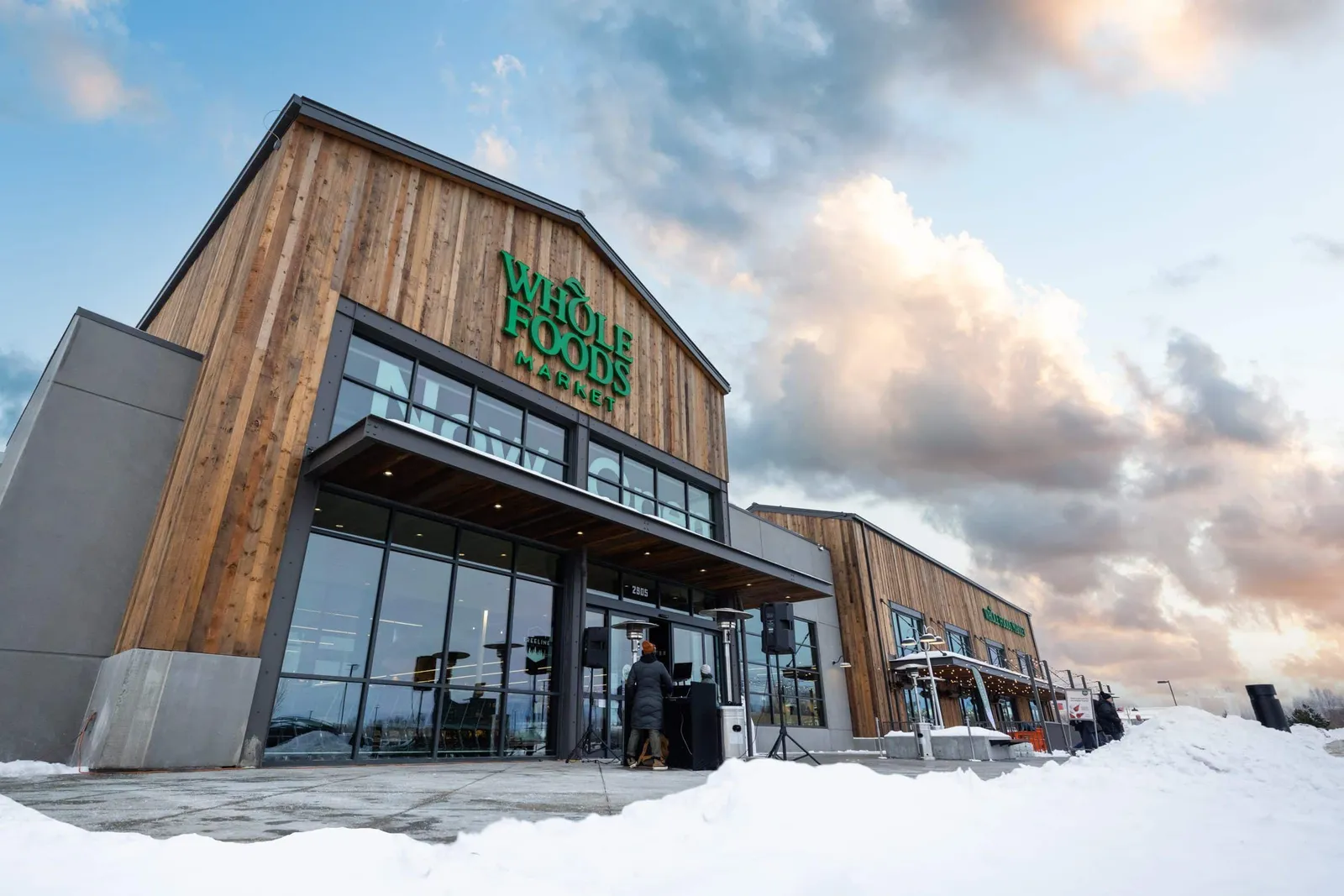
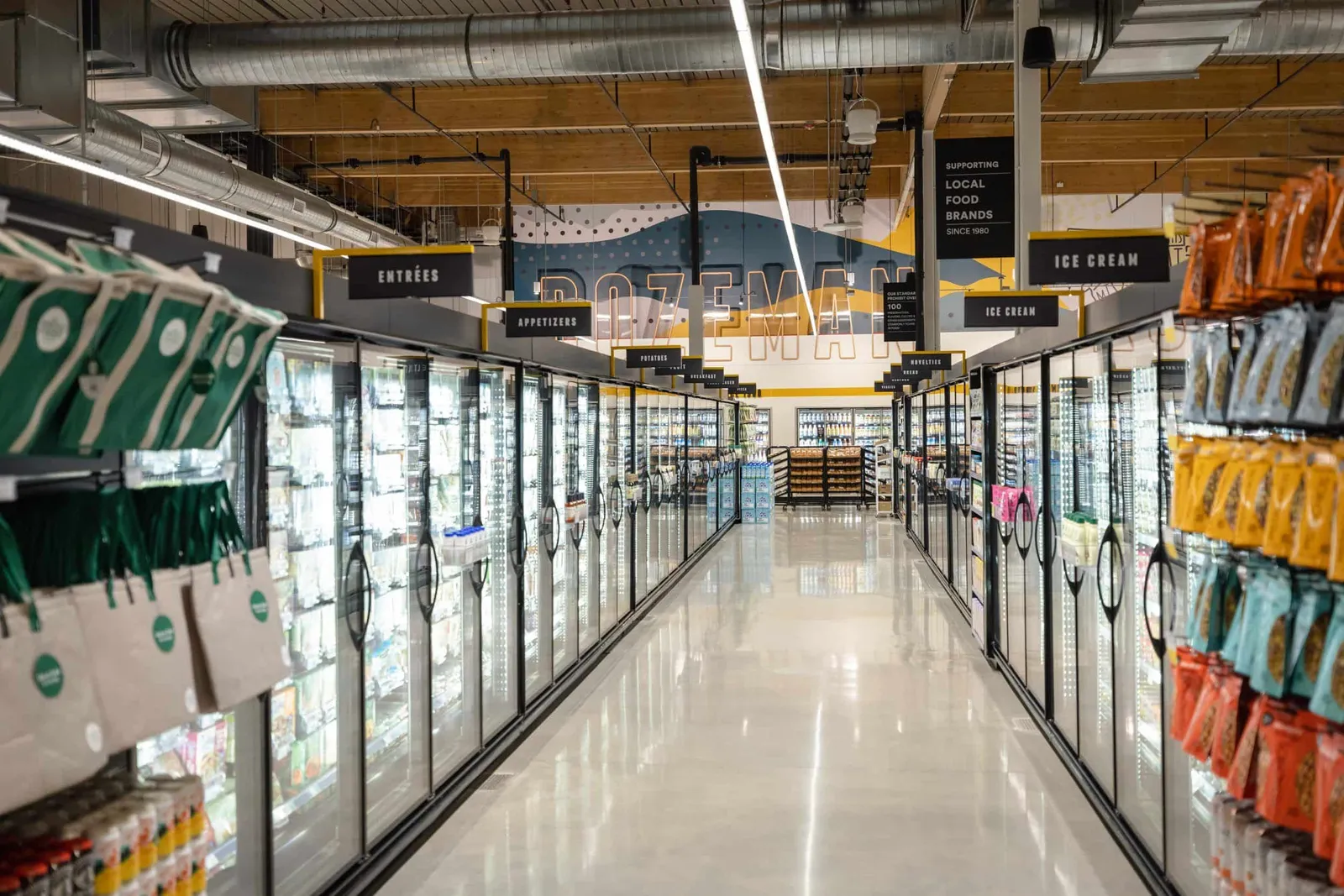
With each store opening announcement, Whole Foods notes how many local products customers can find. Its Rochester, New York, location, for example, features more than 500 items from the central and western parts of the state while its store in South Windsor, Connecticut, includes more than 1,000 items sourced from New England.
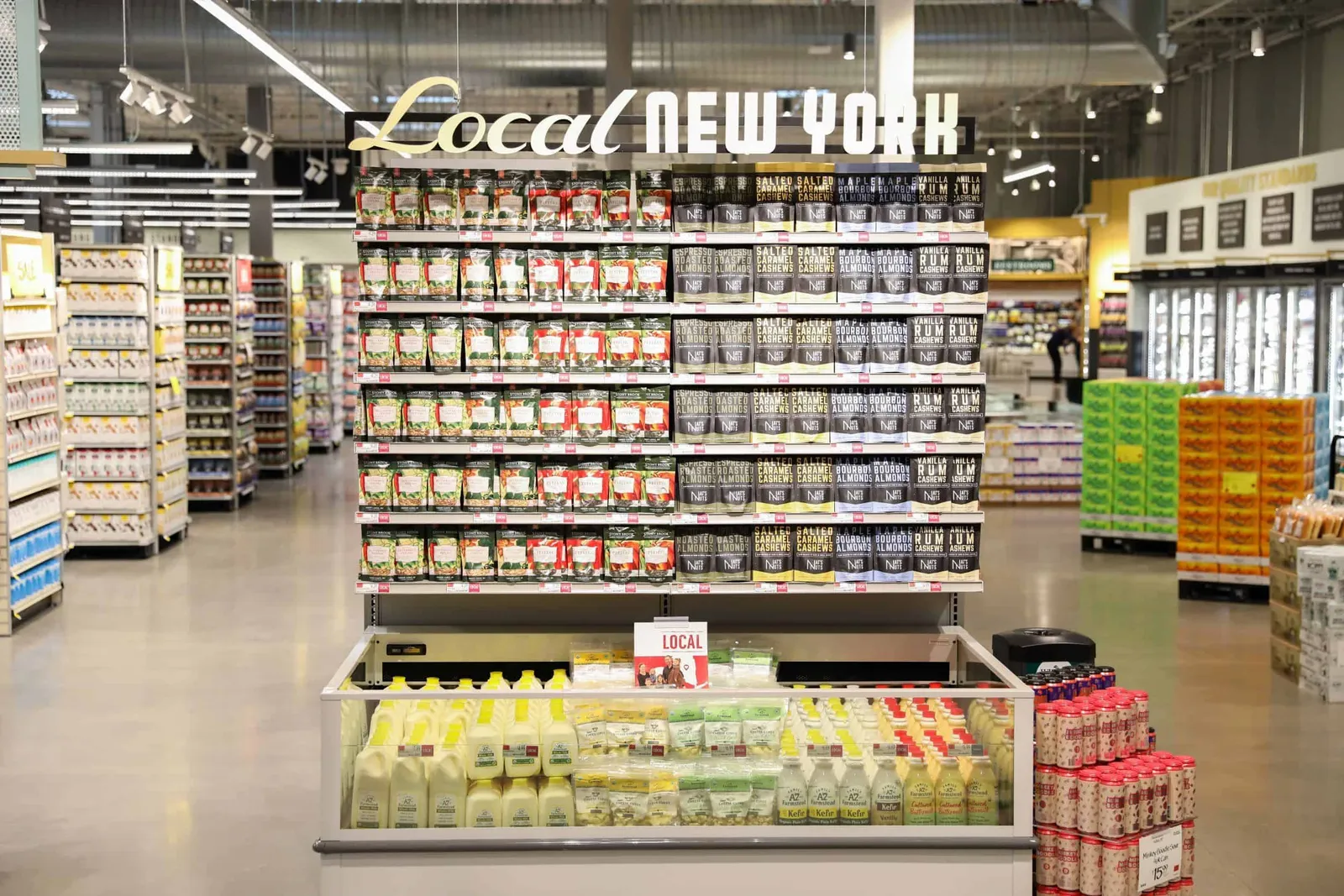
Rethinking in-store experiences
Carrying a wide assortment of local products isn’t the only way Whole Foods has looked to stand out to customers.
The grocer has implemented a variety of experiential offerings at its locations in recent years. Its store alongside New York City’s High Line elevated walkway at 450 W. 33rd St. includes a meat cutting room where customers can watch butchers in action, a cocktail bar and five individual food bars on the second floor, while the first floor sells fast-moving convenience products.
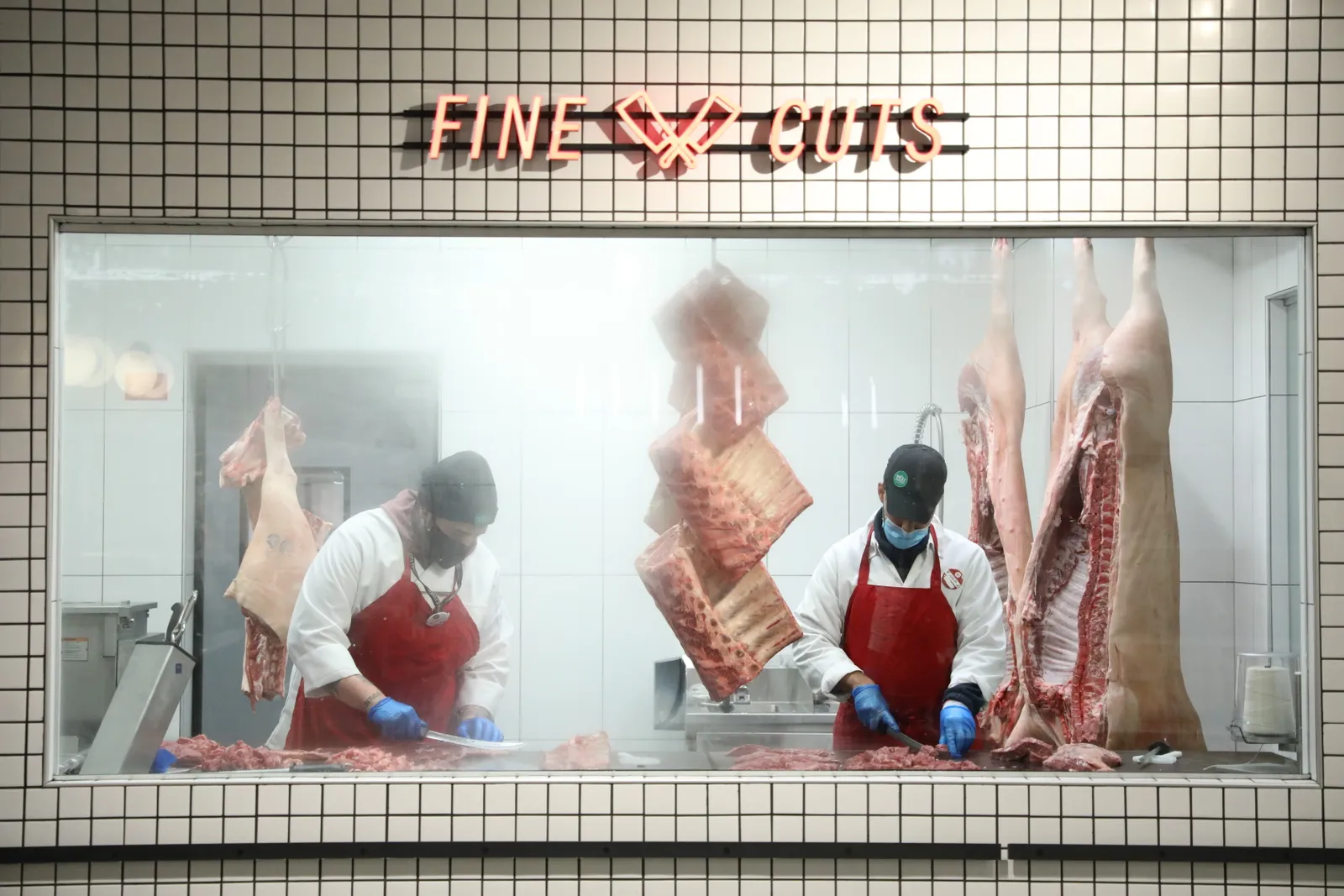
Numerous Whole Foods stores offer bars and eateries for made-to-order meals. Some Whole Foods have added options for people to do Amazon returns in-store with no box or label required.
Whole Foods has also trialed technology from its parent company with mixed results. The company is pulling out Amazon’s Just Walk Out frictionless technology, which arrived in two Whole Foods stores in early 2022. The departure of the technology at a store in Washington, D.C., and one in Sherman Oaks, California, echoes a similar move at Amazon Fresh stores as part of Amazon’s efforts to revamp that struggling chain.
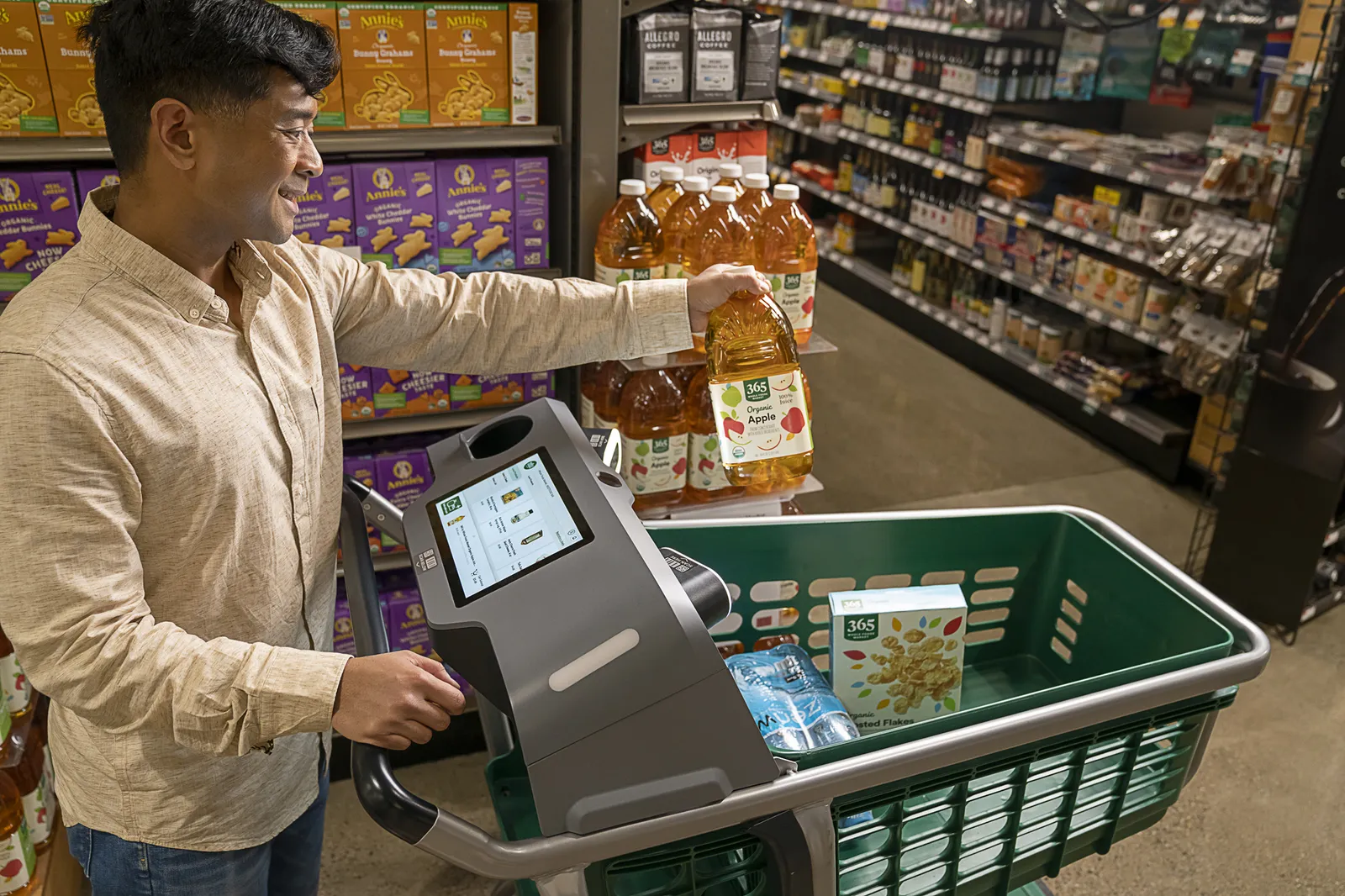
Amazon One, a palm-scanning tool for identification and payments, has fared better for Whole Foods. Amazon announced last summer plans to roll out that technology across Whole Foods’ entire U.S. store fleet by the end of 2023.
Six Whole Foods stores currently offer Dash Cart, Amazon’s take on the smart cart.










